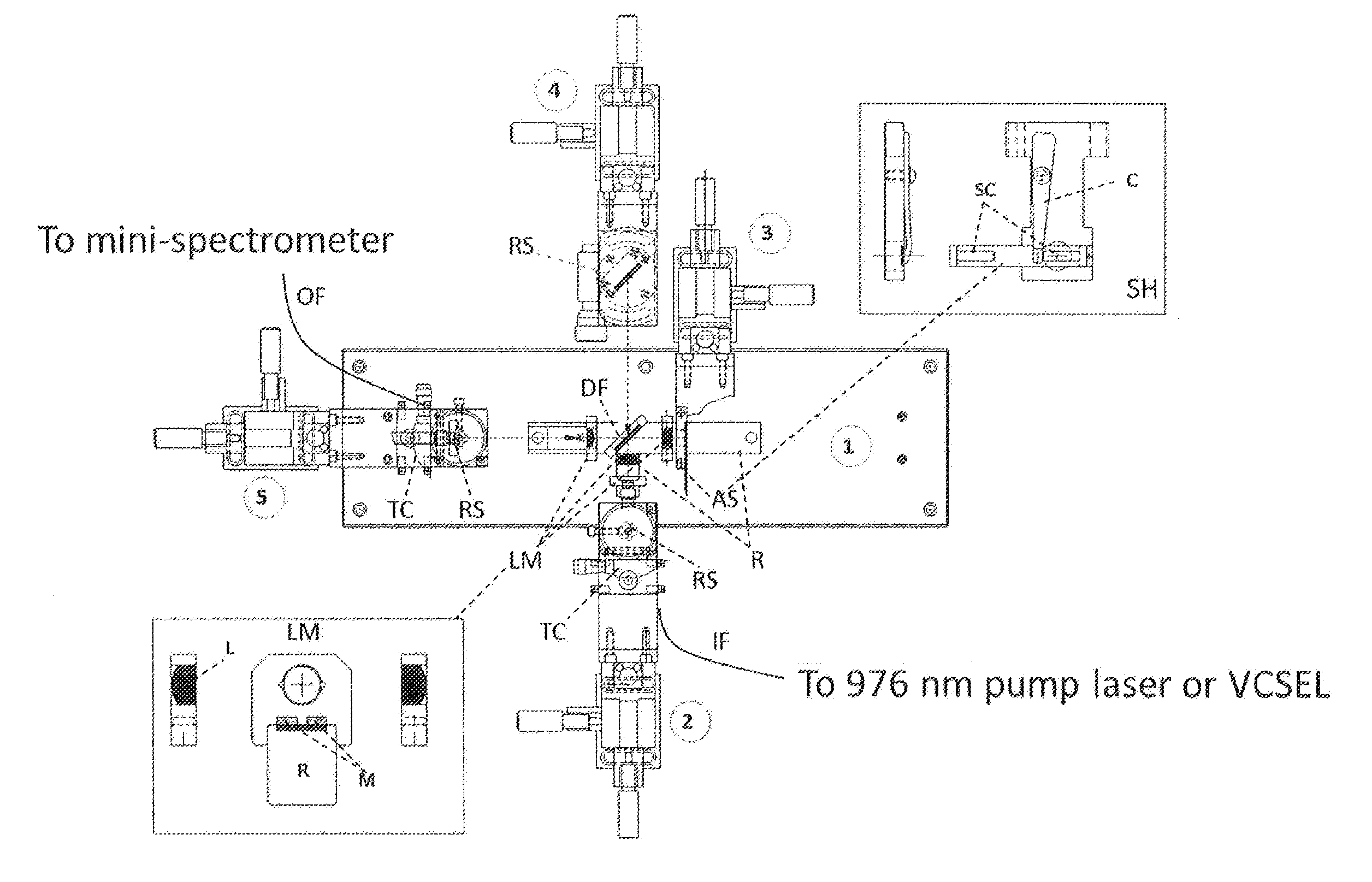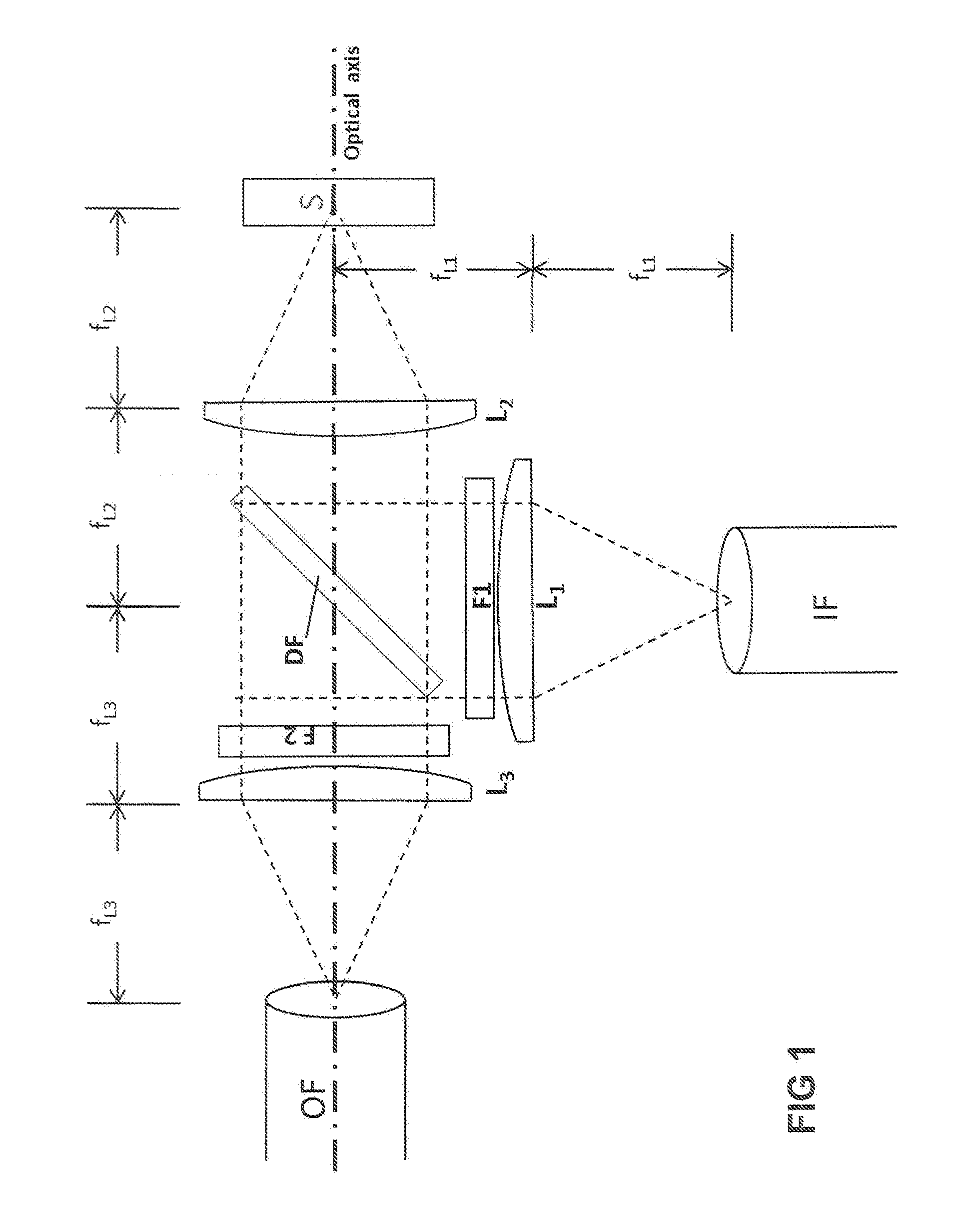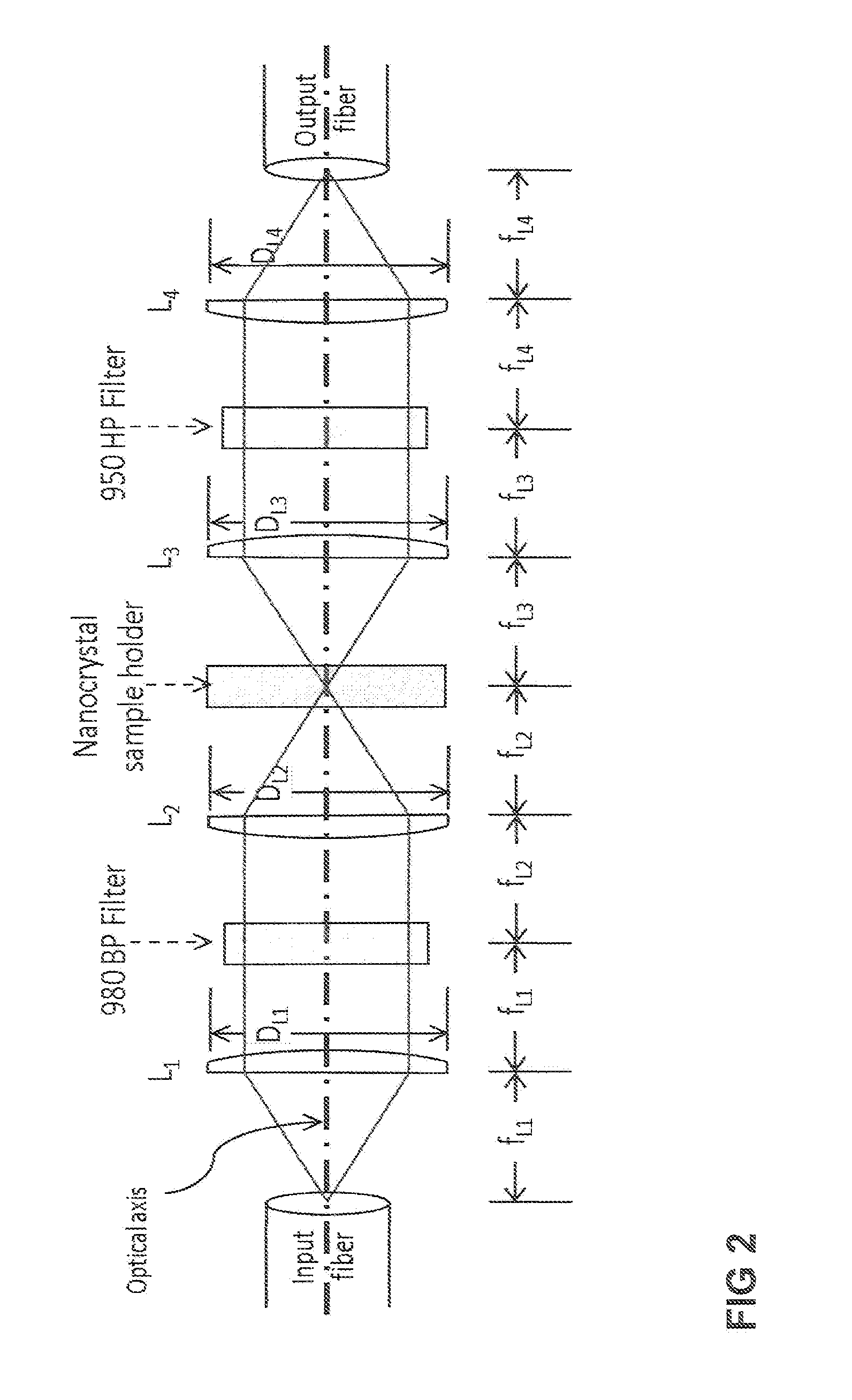Optical system enabling low power excitation and high sensitivity detection of near infrared to visible upconversion phoshors
a technology of near infrared and upconversion phoshor, which is applied in the direction of optical radiation measurement, fluorescence/phosphorescence, luminescent dosimeter, etc., can solve the problems of affecting the detection effect of near infrared to visible upconversion phoshor, and requiring post-signal processing. achieve the optimal luminescent emission intensities
- Summary
- Abstract
- Description
- Claims
- Application Information
AI Technical Summary
Benefits of technology
Problems solved by technology
Method used
Image
Examples
Embodiment Construction
[0013]The invention described herein is cost-effective module design which when integrated as part of either a general spectrophotometric platform or application-specific reader enables the delivery and collection of excitation and luminescence intensities, respectively, necessary to obtain optimal upconversion compound signal detection. The preferred embodiment of the invention is a “Reflective Mode” (R-mode) configuration which enables optimal production and detection of upconversion signal from the lanthanide series of the NIR-to-visible upconversion phosphors and nanophosphors (UCPs) using a relatively low-power continuous wave laser diode as excitation light source and for a variety of applications as determined by the choice of the type of sample or surface containing the phosphors that is illuminated. The samples could be in a number of different formats, be solid or liquid and made of organic or inorganic material. For bioanalytic purposes examples of sample formats could be...
PUM
 Login to View More
Login to View More Abstract
Description
Claims
Application Information
 Login to View More
Login to View More - R&D
- Intellectual Property
- Life Sciences
- Materials
- Tech Scout
- Unparalleled Data Quality
- Higher Quality Content
- 60% Fewer Hallucinations
Browse by: Latest US Patents, China's latest patents, Technical Efficacy Thesaurus, Application Domain, Technology Topic, Popular Technical Reports.
© 2025 PatSnap. All rights reserved.Legal|Privacy policy|Modern Slavery Act Transparency Statement|Sitemap|About US| Contact US: help@patsnap.com



